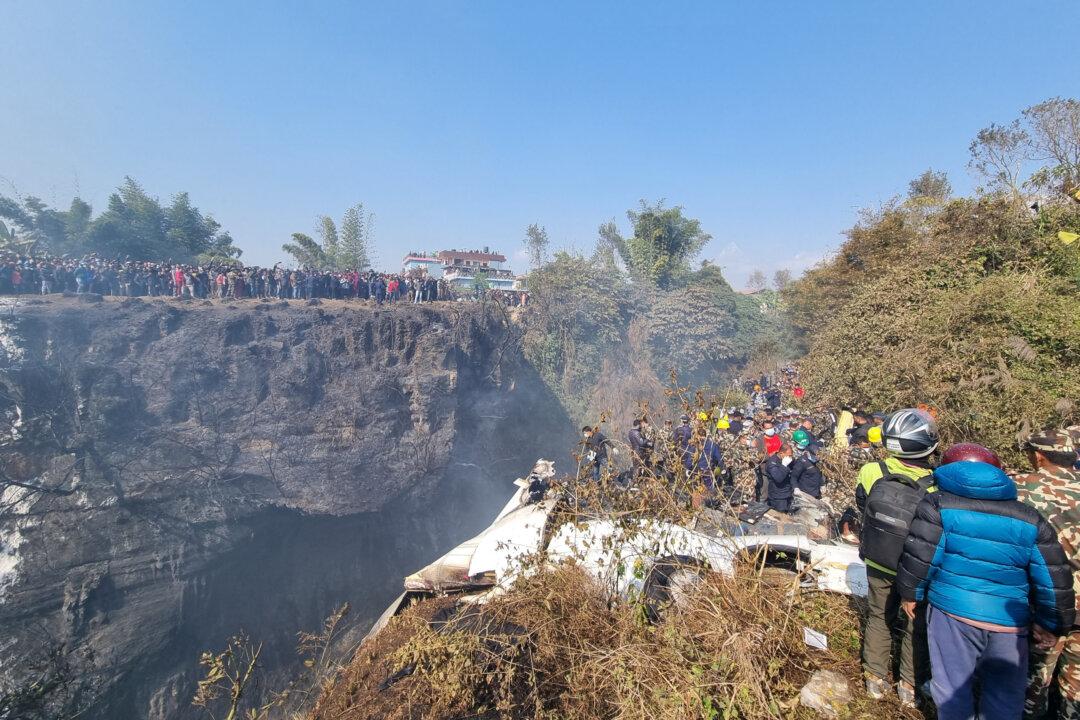None of the passengers on board the twin-engine ATR 72 aircraft that crashed in the city of Pokhara, Nepal, on Jan. 15 are likely to have survived, according to officials.
In a phone interview with The Washington Post, Tek Bahadur K.C., chief district officer of Kaski District—which has Pokhara as its district headquarters—said that authorities in the area were “trying to recover four bodies from the Seti River Gorge,” which is nearly 1,000 feet deep.





